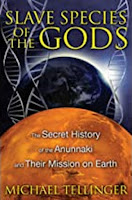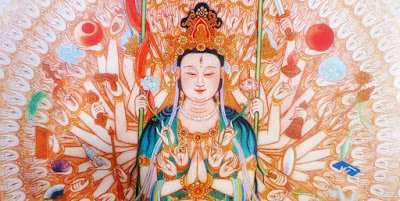Roshi Bodhin Kjolhede | Zen Bow | Spring 2019, Vol. XLI, No. 1 via Rochester Zen Center (RZC.org); Seth Auberon, CC Liu, Dhr. Seven (eds.), Wisdom Quarterly
ROSHI
PHILIP KAPLEAU HAS SAID that when he was at
Hosshin-ji, the monastery where he spent his first three years of training in Japan, at the end of each
sesshin Harada Roshi would publicly recognize, in the
zendo, the participants who had achieved
kensho that week. It was done as a brief ritual, but imagine what it put people through: Besides inviting feelings of
envy on the part of the “losers,” the ritual might well have been hard on the “winners,” too; in Japan, you never want to stand out from the group. So why did Harada Roshi do this?
Two reasons come to mind. First, by publicly presenting those who had just seen into their nature, he hoped to boost others’
faith that they, too, could break through. Second, now that those who had glimpsed
their True Self were “outed,” they would feel a greater responsibility to live up to that Self in their daily lives.
However well these strategies may have worked at Hosshin-ji, for
an American Sangha I would expect them to do more harm than good. They would too likely
reinforce the delusion that there is something to be “
attained” in Zen. On the contrary, if
awakening gives us anything, it’s the realization that from the very beginning all beings are endowed with the same originally e
nlightened nature....
THE BUDDHA HOLDS UP A FLOWER
Koan commentary
 |
| Art in the Rochester Zen Center (rzc.org) |
How can we convey the teaching beyond words and letters…in words? Once, when the World-Honored One (the Buddha) in ancient times was upon Vulture's Peak (named such because of the shape of the rocks), he held up a flower before the assembly of monastics.
At this all were silent. Venerable Great Kashyapa (Maha Kassapa) alone broke into a smile. The World-Honored One said, “I have the all-pervading Eye of the True Dharma, the Secret Heart of Incomparable Nirvana, the True Aspect of Formless Form. It does not rely on letters and is transmitted outside the sutras. I now hand it on to Maha Kashyapa.”
The Commentary
 |
| You don't get it like I do (Demystifying Reality). |
Golden-faced Kudon is certainly outrageous. He turns the noble into the lowly and sells dog flesh advertised as sheep’s head — though with some genius. However, supposing that at the time all the monastics had smiled, how would the “All-including Eye of the True Dharma” have been handed on?
Or again, if Kashyapa had not smiled, how could he have been entrusted with it? If you say that the True Dharma can be handed on, the golden-faced old man with his loud voice deceived the simple villagers. If you say it can’t be transmitted, why did the Buddha say he had handed it on to Kashyapa?
The Verse
Holding up a flower
The snake shows its tail.
Kashyapa smiles,
And people and devas are confounded.
THIS CASE IS BASED ON A FAMOUS STORY. Some have called it a fable and said it never really happened, but it doesn’t matter in terms of its value as a koan (a public case). Whether it has historical veracity or not is not important; it’s a rich koan.
About Maha Kashyapa: “Kashyapa” is the short form of Mahakashyapa. The prefix “Maha” means “great” or “large,” and here it is an honorific. With this incident of him on Vulture's Peak smiling in response to the Buddha holding up a flower, he became the first patriarch of Zen.
For the scant biographical information available on Mahakashyapa, let’s turn to The Transmission of Light (Denkoroku in Japanese), a collection of koans compiled by the Japanese Zen Master Keizan, the Dharma Heir of Dogen.
This text purports to be Zen’s ancestral line, presented in stories — enlightenment accounts — of each of the 52 or so earliest masters. It says that Kashyapa was born in an Indian Brahmin family, and his name in Sanskrit means "drinker of light."
When he was born, supposedly a golden light filled the room and went into his mouth; hence the name. We’re also told that his complexion was golden.
As a monk he was renowned for his ascetic self-discipline and moral strictness, and these qualities enabled him to assume the leadership of the Sangha after the passing of the Buddha.
It was Kashyapa who convened the First Buddhist Council in order to counteract tendencies toward a less strict lifestyle within the Sangha. He had differences of opinion with Ananda, the Buddha’s attendant, but in the end authorized Ananda as his Dharma Heir in Zen’s ancestral line.
IN THE CHINESE TEMPLES and in [the Rochester Zen Center] Buddha Hall in Rochester, the figure of Mahakashyapa stands on the Buddha’s right and Ananda on the Buddha’s left. Iconographically, Mahakashyapa is often identified by his cracked and wrinkled face, meant to show his age and his asceticism.
When Kashyapa met the Buddha, the latter said, “Welcome, mendicant” [
Ehi bhikkhu or "
Come, monastic"] — so by that time, apparently, Kashyapa was already wearing the patchwork robe of a monk. [The saying makes someone a monk ordained by the Buddha, so one would not need to be wearing a robe yet.]
The Denkoroku says that “Kashyapa had practiced austerities and never wasted any time.” Remember that the Buddha himself began his journey to enlightenment by first spending six years practicing severe austerities, but then gave them up when he realized they would not lead to enlightenment.
The Buddha then warned that self-punishment [penance, severe asceticism] was not the way, but Kashyapa stuck to his ways, drawing the disapproval of others in the Sangha:
“Only seeing the ugly emaciation of his body and the wretchedness of his clothing, everyone doubted Kashyapa.” Still, we’re told, “every time the Buddha was going to give a talk in someplace or other, he shared his seat with Kashyapa, who thenceforth was the senior member of the community.”
More


 Help create a better world because vegetarian and vegan diets have proven health benefits, they save animals‚ save human lives, and help preserve the planet.
Help create a better world because vegetarian and vegan diets have proven health benefits, they save animals‚ save human lives, and help preserve the planet.

























_-_Mount_Putuo_Guanyin_Dharma_Realm;_Zhejiang,_China.jpg)





















































































































































































































































